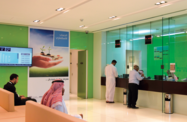A multi-billion-dollar development programme under way in Saudi Arabia is proving to be instrumental in helping the government achieve its long-term aim of widening the base of the national economy by heightening activity in the Kingdom’s capital markets.
Keen to boost their liquidity levels, local companies are carrying out initial public offerings (IPOs) on the Tadawul and tapping the markets by selling bonds, particularly sharia-compliant sukuk, as they position themselves to play a greater role in the Kingdom’s infrastructure plans.
Some observers, however, have suggested that reforms being put together by the Capital Markets Authority (CMA) that will allow direct foreign investment on the exchange may need accelerating if they are to keep pace with the approaching construction and development boom.
Currently valued at around $500bn, the Saudi Arabia General Investment Authority’s development programme through 2020 is expected to account for almost half of all infrastructure and construction work in the Middle East and North Africa (MENA) region well beyond the next decade, a Bank of America Merrill Lynch report said recently.
The initiative has not only led to a 177%-expansion in the Kingdom’s construction and infrastructure sectors during the past year, the report said, but is also fuelling an expansion in services and logistics, as well as other sectors. Indeed, more banks are now likely to strengthen their lending capability as new projects are rolled out.
Although IPO action in the third quarter of 2012 was muted, the construction firm City Cement Company raised $252m when it floated half its capital in September. The offering was oversubscribed by nearly 300%, according to analysts, who cited the firm’s solid earnings, together with promising prospects for both the company and the sector as reasons for the IPO’s success. Less than a month after its IPO, City Cement issued a statement to the Tadawul announcing a 31% increase in net profits for the first nine months of the year, totalling $53.2m.
Media reports issued at the end of September said Construction Products Holding Company (CPHC), part of the Binladen group and a major producer of building materials, also planned to stage an IPO at the end of 2012 or early next year, with suggestions that a 30% stake in the company would be offered. As the largest supplier of building materials in the Kingdom, with an 80% market share, CPHC is likely to play a significant role in the construction programme.
In early November, the press reported that GIB Capital and Samba Capital had been mandated to manage the IPO, although the timing of the offering has yet to be confirmed. If, as expected, the IPO is heavily oversubscribed, analysts suggest other firms may be encouraged to follow CPHC’s lead by going public.
Meanwhile, Saudi Arabia’s banks have also moved to boost their liquidity this year. The Saudi British Bank issued a bond worth SR1.5bn ($400m) in March, while on November 13, Banque Saudi Fransi announced that its shareholders had authorised a secondary sukuk issue worth up to $667m to strengthen its capital reserves. The issue comes on the back of a five-year, $750m sukuk offer Saudi Fransi made in May which attracted bids of around $4bn.
Other countries across the region are following the Kingdom’s lead in tapping the capital markets to raise additional funding for infrastructure projects. By early November, almost $14bn worth of dollar-denominated sharia-compliant bonds had been issued throughout the GCC, which was almost double the $7.8bn issued in conventional bonds, Reuters reported.
While both IPOs and the sukuk issuances in Saudi Arabia have generated considerable interest, activity remains limited to the domestic market, with the CMA, which is gradually rolling out reforms, yet to introduce measures that would allow direct foreign investment on the exchange.
While some analysts expect the tempo of the CMA’s reforms to quicken as Saudi Arabia’s construction and development programme gathers momentum, they also acknowledge the importance of ensuring a balance is struck between attracting more capital to the markets and controlling increased risk from greater exposure to international investors.

